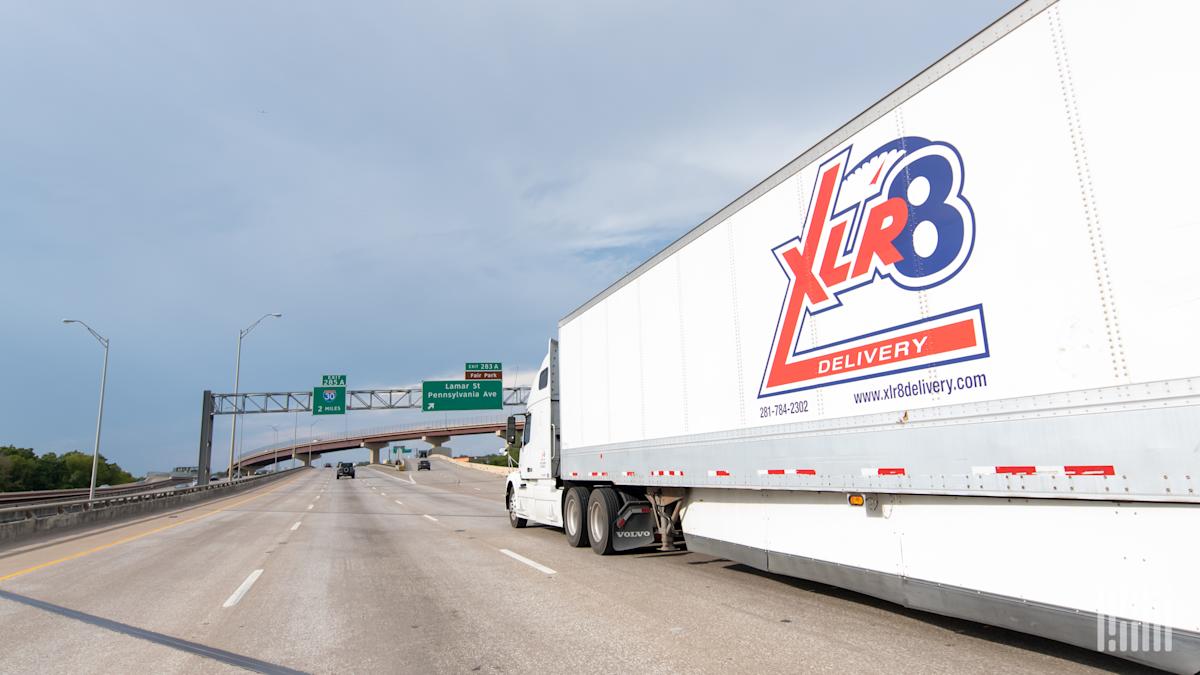Chart of the Week: Outbound Average Length of Haul – USA SONAR: OALOHA.USA
The average length of haul for truckload tenders in the U.S. fell to 533 miles last week—down approximately 70 miles, or 11%, from the same time last year, according to SONAR’s tender data. While the Outbound Average Length of Haul Index (OALOHA) has dipped lower in the past, it has only reached this level during brief periods. Weak overall demand has kept the truckload market from meaningfully rebounding, but the loss of longer-haul freight is compounding that stagnation. Is there any reason to believe this trend will reverse in 2025?
The primary driver behind the declining average is the shift of long-haul freight to intermodal, though demand for regional truckload moves has also softened. Freight moving less than 100 miles, however, has remained relatively resilient.
Companies began increasing average lead times on orders in early 2024 as Red Sea attacks disrupted international shipping. While this didn’t reach COVID-era levels of service breakdown, the disruptions were enough to cause some inconsistency. As a result, many goods arrived in the U.S. with extra buffer time for domestic movement.
Inventory levels have been climbing unevenly over the past year, according to the Logistics Managers’ Index (LMI). This follows a strong period of destocking in 2023, driven by collapsing goods demand and over-ordering — a pattern that remains fresh in the minds of importers and may continue to suppress aggressive restocking in the near term.
Tariffs and the renewed trade war have amplified the pull-forward effect this year, reinforcing the shift to earlier, bulkier ordering cycles.
Intermodal has benefited significantly from longer lead times and accelerated shipping schedules. Last week, international loaded container volumes moving by rail were up 7% year-over-year, while domestic intermodal volumes remained flat. Intermodal is inherently more cost-effective, especially for long-haul moves across the country. With more freight landing at large ports—those best equipped with major rail terminals—the shift to rail has intensified.
Notably, intermodal is replacing not just any truckload freight, but some of the most impactful long-haul runs. For example, a Los Angeles to Chicago route takes a truck about four days—capacity that intermodal is increasingly absorbing.
A breakthrough trade deal with Japan last week, which includes a 15% tariff rate, suggests the beginnings of trade de-escalation. A significant trade partner — the agreement is a positive signal that some fog is lifting from the uncertain trade environment that defined the first half of the year.
Story Continues
At the same time, inventory carrying costs have surged. The LMI’s inventory cost component rose above 80 in June — its highest level since early 2022 — making it harder for companies to justify holding excess goods.
A calmer trade climate, easing geopolitical risks, and rising holding costs could push shippers back toward just-in-time inventory strategies later this year. While economists and the Fed are forecasting a sluggish finish to 2025, that may not matter much for truckload.
With capacity still showing signs of tightening and long-haul demand near a floor, even modest demand shifts could cause a meaningful market reversal. If shippers pivot back to leaner inventories and faster domestic cycles, long-haul trucking could quickly return to relevance.
The FreightWaves Chart of the Week is a chart selection from SONAR that provides an interesting data point to describe the state of the freight markets. A chart is chosen from thousands of potential charts on SONAR to help participants visualize the freight market in real time. Each week a Market Expert will post a chart, along with commentary, live on the front page. After that, the Chart of the Week will be archived on FreightWaves.com for future reference.
SONAR aggregates data from hundreds of sources, presenting the data in charts and maps and providing commentary on what freight market experts want to know about the industry in real time.
The FreightWaves data science and product teams are releasing new datasets each week and enhancing the client experience.
To request a SONAR demo, click here.
The post Truckload’s diminishing distance appeared first on FreightWaves.

